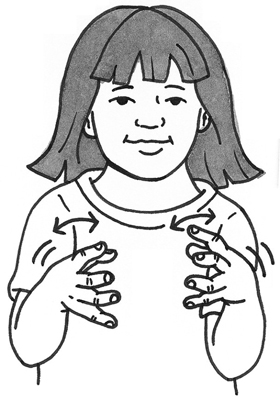I recently went to a self-reliance seminar that had a great class about helping to instill confidence and self esteem in your children. The instructor is a counselor in a local school district and has worked with kids for years. She presented a great lesson, followed by some excellent handouts. This particular handout focuses on using books to help teach (with some excellent recommendations if you or your child are struggling with a specific scenario).
What is Bibliotherapy?
According to Wikipedia.org, "bibliotherapy" is an expressive therapy that uses an individual's relationship to the content of books and poetry and other written words as therapy.
Bibliotherapy is an old concept in library science. In the U.S.it is documented as dating back to the 1930s. The basic concept behind bibliotherapy is that reading is a healing experience. It was applied to both general practice and medical care, especially after WWII, because the soldiers had a lot of time on their hands while recuperating.
At its most basic, bibliotherapy consists of the selection of reading material that has relevance to that person's life situation. The idea of bibliotherapy seems to have grown naturally from the human inclination to identify with others through their expressions in literature and art. The concept of bibliotherapy has widened over time, to include self help manuals for adults. Still, the phrase is most often used in reference to children.
Bibliotherapy can give children the confidence they need to deal with anything that comes their way. It also gives parents an opportunity to discuss it with their children and find out what is going on. Bibliotherapy can consist solely of reading, or it can be complemented with discussion or play activity. A child might be asked to draw a scene from the book or asked whether commonality is felt with a particular character in the book. The book can be used to draw out a child on a subjuect she/he has been hesitant to discuss.
Basically, bibliotherapy can be a way for parents to open communication with children about problems their children may be having. Books chosen for bibliotherapy should be developmentally appropriate for the child and shared with the child in a caring way.
In my opinion, reading scriptures is the highest form of bibliotherapy!! Certain stories either told or read in the scriptures can be "likened" to our own children's experiences (see 1 Nephi 19:23). Other resources for bibliotherapy may include personal histories of ancestors or often told stories about meaningful experiences that family members have had, etc. You may already have been using bibliotherapy in your family and didn't even know what it was!!
Here are some book titles that are recommended for certain scenarios (along with a link so you can look them over at Amazon.com).
Anxiety / Fear
You've Got Dragons, by Kathryn Cave
Wemberly Worried, by Kevin Henkes (kids refusing school)
The Kissing Hand, by Audrey Penn (kids refusing school)
Smile a Lot, by Nancy Carlson (school problems)
Thank You, Mr. Falkner, by Patricia Polacco (learning disability)
What if the Shark Wears Tennis Shoes?, by Winifred Morris
The Knight Who Was Afraid of the Dark, by Barbara Hazen
Anger
What are You so Grumpy About?, by Tom Lichtenheld
If You're Angry and You Know It, by Cecily Kaiser
When I Feel Angry, by Cornelia Maude Spelman
Andrew's Angry Words, by Dorothea Lachner
Feeling Angry, by Althea Braithwaite
I'm Not Going to Chase the Cat Today, by Jessica Harper
When Sophie Gets Angry - Really, Really Angry, by Molly Bang
Alex and the Terrible, Horrible, No Good, Very Bad Day, by Judith Viorst
Bullying / Friendships
How to Lose All Your Friends, by Nancy Carlson
Some Dogs Do, by Jez Alborough
Charlie the Caterpillar, by Dom De Luise
A Bad Case of Stripes, by David Shannon
King of the Playground, by Phyllis Reynolds Naylor
My Rotten Redheaded Older Brother, by Patricia Polacco
I Like Myself!, by Karen Beaumont
Feelings
Today I Feel Silly & Other Moods That Make My Day, by Jamie Lee Curtis
How Are You Peeling? Foods With Moods, by Saxton Freyman & Joost Elffers
My Many Colored Days, by Dr. Seuss
The Feelings Book, by Todd Parr
Honesty / Tattling
Ruthie and the Not So Teeny Tiny Lie, by Lara Rankin
Edward Fudwupper Fibbed Big, by Berkeley Breathed
Don't Squeal Unless It's a Big Deal, by Jeanie Franz, Ransom
Tattlin' Madeline, by Carol Cummings
A Bad Case of Tattle Tongue, by Julia Cook
Miscellaneous
The Dog Poop Initiative, by Kirk Weisler (boy taking initiative)
The Paper Bag Princess, by Robert Munsch & Michael Martchenko (assertive girl)
Queen Bees and Wannabes, by Rosalind Wisement (for teenage girls)
The Feeling Good Handbook, by David D. Burns, M.D.
**Patrick K. Hallinan has a whole series of social skills books for very yound children called: My first Day of School, My Teacher's My Friend, That's What a Friend Is, etc.
**Cheri J. Meiners has a whole series of social skills books for young children called: Listen, Follow Instructions, Share and Take Turns, Talk and Work it Out, I'm Afraid, etc.
Personally, we read a lot at our house, and I am excited to try some of these books I haven't heard of before. I'd love feedback if any of you have great book recommendations!
Personally, we read a lot at our house, and I am excited to try some of these books I haven't heard of before. I'd love feedback if any of you have great book recommendations!
















